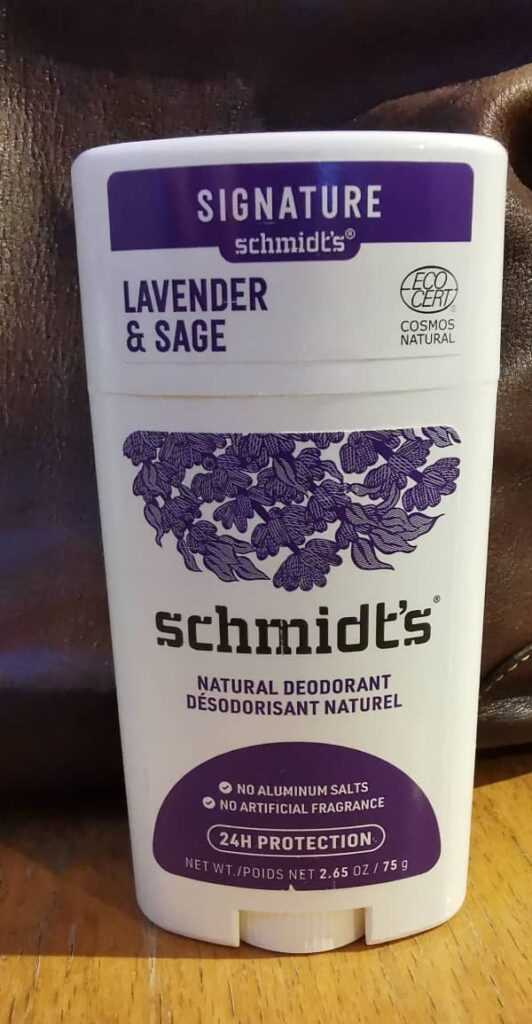Deodorant is an essential part of many people’s daily routines. It helps us feel fresh and confident throughout the day. However, have you ever wondered whether deodorant is considered a liquid or not? This question might seem simple, but the answer is not as straightforward as you might think.
Technically speaking, deodorant can be classified as a liquid or a solid, depending on its formulation. Traditional roll-on deodorants, for example, are typically in a liquid form. They contain a mixture of liquid ingredients, such as alcohol and water, that help to keep us dry and odor-free.
On the other hand, solid deodorants, like sticks or gels, are not considered liquids. They are made up of a waxy substance that is hard at room temperature but melts upon contact with the skin. These types of deodorants are more convenient for travel and on-the-go use.
So, while deodorant can be either a liquid or a solid, it ultimately comes down to the specific formulation and packaging. Whether you prefer a roll-on, spray, stick, or gel, the most important thing is finding a deodorant that works for you and keeps you feeling fresh all day long.
- What Constitutes a Liquid?
- Understanding the Definition
- Physical Properties of Deodorant
- Transportation and Travel Considerations
- Classifying Deodorant
- Deodorant Composition
- 1. Antimicrobial Agents
- 2. Fragrances
- Liquid-like Properties of Deodorant
- Question-answer:
- Is deodorant considered a liquid or a solid?
- I have a deodorant in a stick form. Is it considered a liquid for airport security purposes?
- Can I take a liquid deodorant in my carry-on bag when travelling by plane?
- What are the different forms of deodorant available?
What Constitutes a Liquid?
When determining whether a substance is considered a liquid, there are a few key factors to consider. Generally, a liquid is a state of matter that has a definite volume but takes the shape of its container. Unlike solids, liquids do not have a definite shape. Instead, they flow and take on the shape of whatever container they are poured into.
Liquids are characterized by their ability to freely move and conform to their surroundings. They can be poured, splashed, and easily manipulated. Additionally, liquids have a relatively low viscosity, meaning they are not as thick or resistant to flow as substances like honey or syrup.
In scientific terms, liquids are considered to be an intermediate state of matter, between gases and solids. They are formed when the kinetic energy of particles decreases enough for them to come close together and form bonds, but not enough for them to become fixed in a specific arrangement like in a solid.
It is important to note that not all substances are classified as liquids. Gases, for example, do not have a definite volume or shape and are not considered liquids. Solids, on the other hand, have a fixed volume and shape and are also not considered liquids.
When it comes to deodorant, whether it is considered a liquid or not depends on its composition and physical properties. Some deodorants come in liquid form, while others are solid or gel-like. Ultimately, it is up to the manufacturer to determine the classification of their product.
| Properties of Liquids: |
|---|
| Definite volume |
| No definite shape |
| Flows and takes shape of container |
| Easily manipulated |
| Relatively low viscosity |
| Intermediate state of matter |
Understanding the Definition
Before determining whether deodorant is considered a liquid, it is important to understand the definition of a liquid. According to the Merriam Webster dictionary, a liquid is a substance that has a definite volume but no definite shape. In simpler terms, it is a state of matter that can flow and take the shape of its container.
Deodorant, specifically the traditional spray or roll-on varieties, generally falls under the category of liquids. These deodorants are typically formulated as a liquid or gel that is applied to the underarms or other areas of the body to eliminate or reduce unpleasant odors caused by perspiration.
Physical Properties of Deodorant

Deodorants typically have a liquid or gel-like consistency, which allows them to be easily applied to the skin. They are designed to have a spreadable texture that can be evenly distributed, providing the desired odor protection.
It is important to note that not all deodorants are in liquid form. Some deodorant products, such as solid stick or powder deodorants, may have a different physical state. These solid deodorants are typically made with waxes or powders that create a solid consistency, which can be applied directly to the skin.
Transportation and Travel Considerations
When it comes to transportation and travel regulations, deodorants that are considered liquids are subject to certain restrictions. In most cases, the Transportation Security Administration (TSA) considers deodorant sprays and roll-ons as liquids when it comes to carry-on baggage.
The TSA has specific rules regarding liquids in carry-on bags, stating that each passenger is allowed to bring a quart-sized bag of liquids, aerosols, gels, creams, and pastes in containers that are 3.4 ounces (100 milliliters) or less per item. This includes deodorant sprays and roll-ons, which must meet the size restrictions to be allowed in carry-on bags.
Conclusion
Based on the definition of a liquid and the physical properties of deodorants, it can be concluded that deodorant is generally considered a liquid, especially in the case of traditional spray or roll-on varieties. However, it is important to note that there are also solid deodorant options available that do not fall under the liquid category.
It is always recommended to check the specific regulations and recommendations of transportation authorities, such as the TSA, when traveling with deodorant to ensure compliance with their guidelines.
Classifying Deodorant
When it comes to classifying deodorant, the question of whether it is considered a liquid is a common one. Generally, deodorant falls into the category of personal care products, specifically designed to control body odor. However, its classification as a liquid or solid can vary depending on the type of deodorant.
Traditional stick deodorants are typically solid in form and do not contain a liquid component. They are composed of a variety of ingredients, such as waxes, oils, and powders, that help to reduce perspiration and mask odor. These deodorants can be applied directly to the underarms or other areas of the body and leave a residue on the skin for a lasting effect.
On the other hand, there are also liquid deodorants available in the market. These are usually found in spray or roll-on forms. Liquid deodorants contain a higher concentration of active ingredients, such as alcohol or antimicrobial agents, that target odor-causing bacteria. They are applied by spraying or rolling the liquid directly onto the skin and tend to dry quickly, leaving a fresh feeling.
It is important to note that some deodorants can be classified as both solid and liquid, depending on the packaging and formulation. For example, there are solid stick deodorants that have a gel-like consistency when applied to the skin. These hybrid deodorants provide the convenience of a stick form but offer the benefits of a more fluid product.
Overall, while deodorant is primarily considered a personal care product, its classification as a liquid or solid depends on the specific type and formulation. Whether you prefer the convenience of a solid stick, the quick-drying nature of a liquid, or the hybrid form, the choice ultimately comes down to personal preference and desired effectiveness.
Deodorant Composition
Deodorants are personal care products used to prevent body odor. They generally come in the form of a liquid or a solid stick. The composition of deodorants varies depending on the brand and type.
Most deodorants contain the following main ingredients:
1. Antimicrobial Agents
Antimicrobial agents such as triclosan or benzalkonium chloride are added to deodorants to inhibit the growth of odor-causing bacteria on the skin. These agents help to control body odor and keep the underarms fresh.
2. Fragrances

Fragrances are added to deodorants to provide a pleasant scent and mask any unpleasant body odors. Different deodorant brands offer a wide range of fragrances to suit individual preferences.
Other common ingredients found in deodorants may include:
- Alcohol-based solvents
- Emollients to soften the skin
- Rheology modifiers to adjust the texture and consistency
- Preservatives to prevent bacterial and fungal growth
- Humectants to retain moisture
- Antiperspirant agents to reduce sweat production
It’s important to note that deodorants do not necessarily include antiperspirant agents. Antiperspirants, on the other hand, contain aluminum compounds to block sweat glands and reduce perspiration.
When choosing a deodorant, it’s advisable to check the ingredients to ensure it is suitable for your skin type and personal preferences.
Liquid-like Properties of Deodorant

While deodorant may not be classified as a liquid in the traditional sense, it does possess certain liquid-like properties. The consistency of deodorant is typically creamy and smooth, allowing for easy application onto the skin. This texture is achieved through the combination of solid and liquid ingredients, resulting in a semi-solid state.
When deodorant is applied to the skin, it undergoes a phase transition, where the heat from the body causes the solid components to melt into a liquid-like form. This allows the deodorant to spread evenly and form a protective layer on the skin’s surface.
In addition to its semi-solid state, deodorant also exhibits flow properties similar to liquids. If exposed to high temperatures, deodorant can melt and pour like a liquid. This is why it is important to store deodorant in a cool, dry place to maintain its desired form.
Deodorant also shares some similarities with liquids when it comes to its ability to dissolve and mix with other substances. For example, deodorant can dissolve in sweat or water, allowing it to effectively combat body odor and provide long-lasting freshness.
Overall, while deodorant may not be classified as a conventional liquid, it does possess liquid-like properties due to its semi-solid consistency, ability to melt, and capacity to dissolve and mix with other substances.
Question-answer:
Is deodorant considered a liquid or a solid?
Deodorant can be either a solid or a liquid, depending on the form it is in. Most commonly, deodorants come in solid stick or roll-on forms. However, there are also sprays and gels that are considered liquid deodorants. So, it can be both!
I have a deodorant in a stick form. Is it considered a liquid for airport security purposes?
No, deodorants in stick form are not considered liquids for airport security purposes. According to the TSA regulations, liquids need to be in containers that are 3.4 ounces (100 milliliters) or less and fit in a single quart-sized bag. As long as your stick deodorant is within these size limits, you can carry it in your carry-on bag without any issues.
Can I take a liquid deodorant in my carry-on bag when travelling by plane?
Yes, you can take a liquid deodorant in your carry-on bag when travelling by plane. However, it must adhere to the TSA regulations for liquids. This means that the container must be 3.4 ounces (100 milliliters) or less and fit in a single quart-sized bag. If your liquid deodorant meets these requirements, you can bring it with you in your carry-on bag.
What are the different forms of deodorant available?
There are several different forms of deodorant available, including solid sticks, roll-ons, sprays, and gels. Solid stick deodorants are the most common and come in a tube or stick form that can be applied directly to the underarms. Roll-on deodorants have a ball applicator that dispenses liquid deodorant when rolled onto the skin. Spray deodorants come in an aerosol can and are sprayed onto the skin. Gel deodorants have a gel-like consistency and are usually applied using a stick or tube.